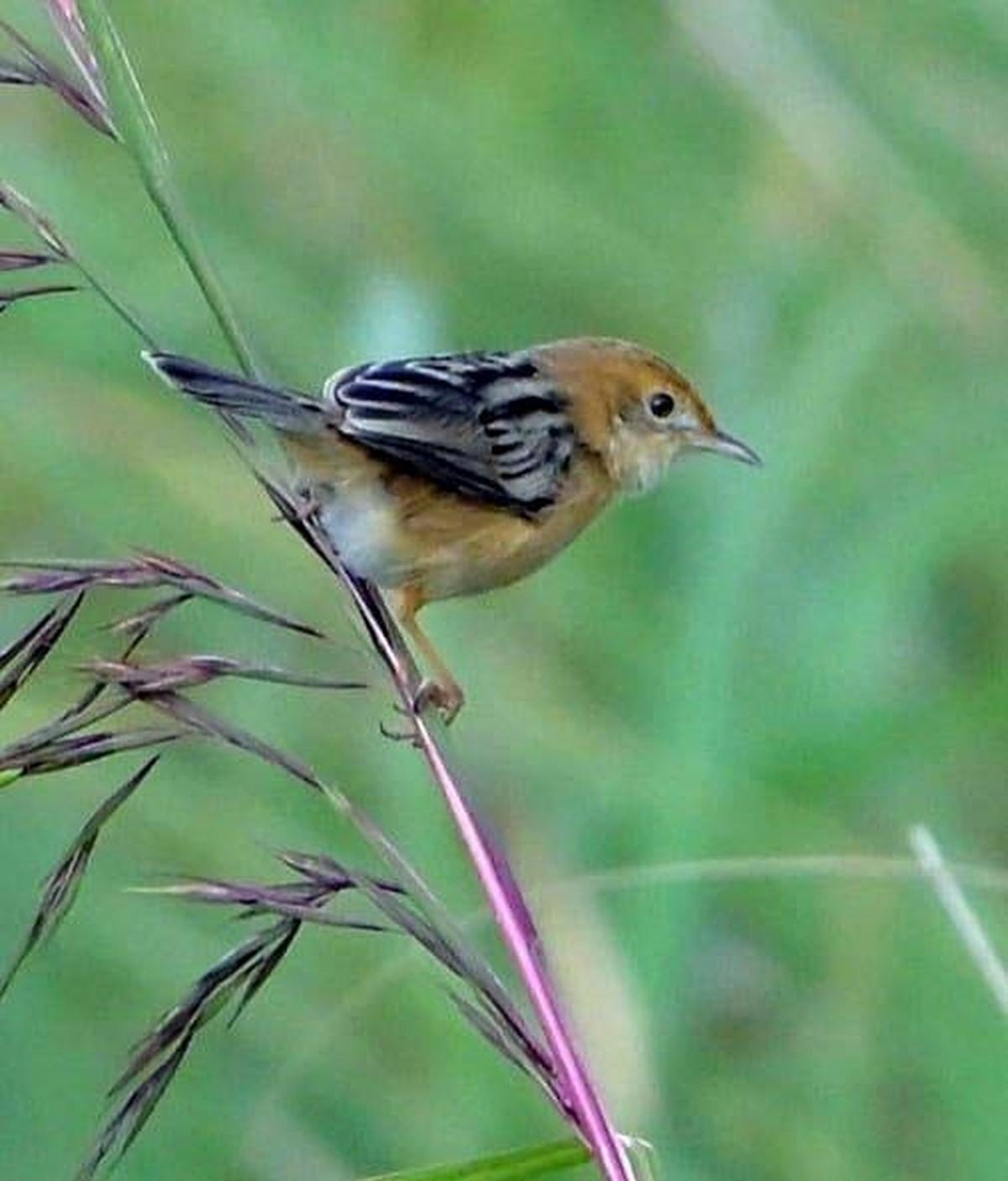Golden-headed Cisticola

- 05 Feb 2025
In News:
In a remarkable ornithological development, the Golden-headed Cisticola (Cisticola exilis) has been sighted in the Mathikettan Shola National Park, Idukki district, Kerala, marking its first recorded presence in the southern Western Ghats after a significant gap.
The finding underscores the ecological richness of the region and highlights the need for intensified avian research in the Western Ghats.
About Golden-headed Cisticola (Cisticola exilis)
- Also known as the bright-capped cisticola, it is a small warbler belonging to the family Cisticolidae.
- It is an omnivorous bird, feeding primarily on invertebrates such as insects and small slugs, along with grass seeds.
- The species is typically found in grassland habitats within mountain ranges, and has been previously recorded in parts of Karnataka, Tamil Nadu, and northern Kerala, notably in Banasura Hills, Wayanad. However, this is the first confirmed sighting in the southern part of the Palakkad Gap.
Physical features of breeding males include:
- Golden-orange plumage on the head, neck, and chest
- Pinkish beaks
- Black streaks on the back
- A distinctive call that aids identification
Habitat and Distribution
- It is widely distributed across Australia and several Asian countries.
- In India, its presence had been limited to select regions of the Western Ghats, making its recent sighting in Mathikettan Shola both rare and ecologically significant.
Conservation Status
- According to the IUCN Red List, the Golden-headed Cisticola is classified as Least Concern. Despite this, the new finding calls for further research into its habitat preferences and conservation needs within India.
About Mathikettan Shola National Park
Located in the southern part of the Palakkad Gap in the Western Ghats of Kerala, Mathikettan Shola is a vital biodiversity hotspot.
- It comprises evergreen forests, moist deciduous forests, shola grasslands, and semi-evergreen vegetation.
- The park hosts three major streams: Uchillkuthi Puzha, Mathikettan Puzha, and Njandar, which are tributaries of the Panniyar River.
- Its highest point is Kattumala, located at the eastern border adjoining Tamil Nadu.
- The Muthavan tribal community resides near the park’s northeastern boundary, reflecting the intricate human-nature interface in the region.
Scientific and Conservation Importance
The rediscovery has been documented in the journal Malabar Trogon by the Malabar Natural History Society, bringing attention to the importance of long-term monitoring and baseline studies in underexplored ecosystems.
It emphasizes:
- The ecological richness of the Western Ghats, a UNESCO World Heritage site.
- The importance of citizen science, as local birdwatchers played a key role in the finding.
- The need for enhanced habitat protection and ornithological research in grassland ecosystems of high-altitude regions.
